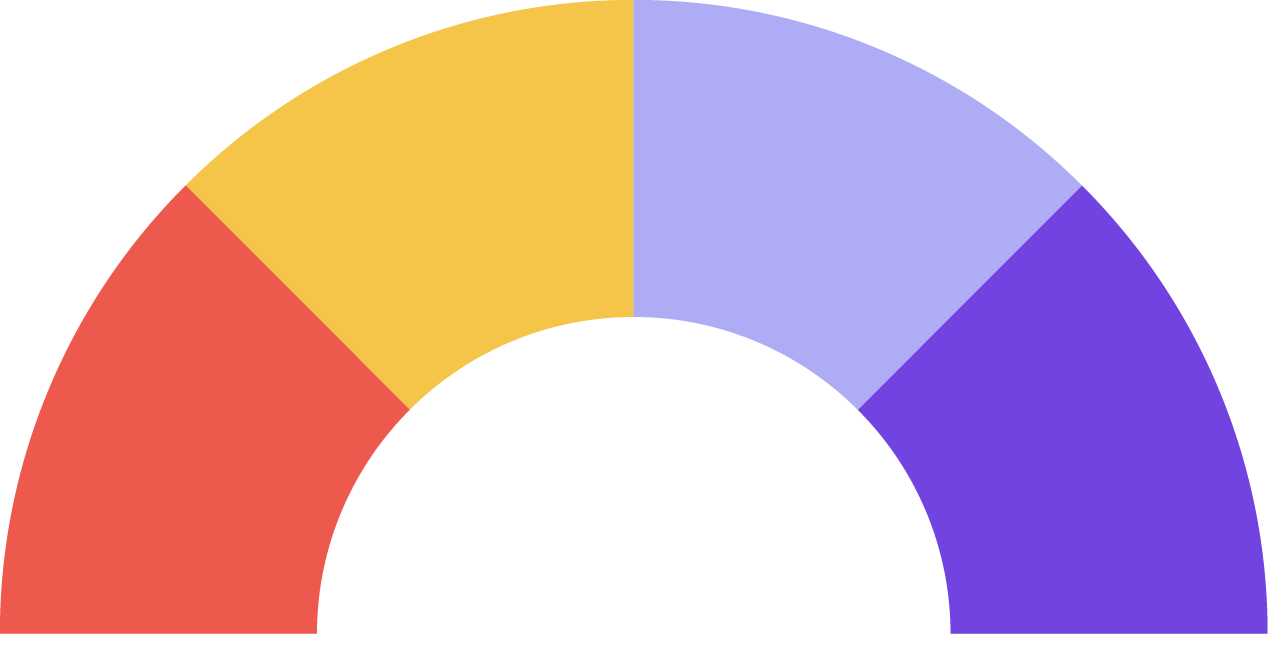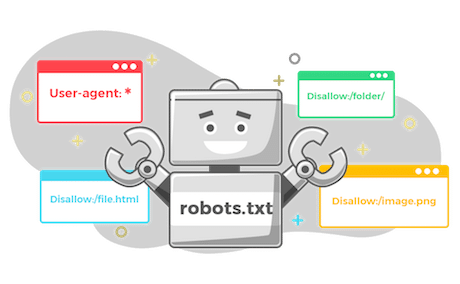TikTok isn’t just a dance app or Gen Z’s dopamine machine anymore… it’s a full-blown search engine.
And if your brand still treats it like optional entertainment, you’re leaving serious visibility, authority, and traffic on the table.
This isn’t about going viral. It’s about showing up where people are searching.
TikTok is now influencing decisions, driving discovery, and taking up space in Google search results.
You read that right, your TikToks can now rank on Google, especially for how-to content, product recommendations, lifestyle tips, and trending queries.
This is Search Everywhere Optimization in action.
And TikTok is no longer a social media silo; it’s a cross-platform content powerhouse.
How does your website score? Get a free instant audit that will uncover the biggest SEO issues affecting your site, and how to fix them.
Article Summary (But You’ll Want to Read the Whole Thing)
- TikTok = search engine + social platform
If you’re not optimizing for both, you’re doing half a job. - Success = niche clarity + authentic short-form content
Don’t try to be everything. Do one thing well—and do it with personality. - Your content pillars matter
Think educational, behind-the-scenes, trend participation, UGC, and entertainment. Your mix = your message. - Treat your account like a media channel
Optimize your profile, batch your content, and plan strategically with a content calendar. - Influencers + repurposing = distribution gold
Great content deserves a second life. Share it on Instagram, YouTube Shorts, and even embed it into blog posts for AI visibility. - Track what matters
Use TikTok analytics to refine what’s working, drop what’s not, and avoid the vanity metrics trap.
The TikTok Shift: What’s Changed in 2025?
Brands that win in 2025 aren’t just playing the TikTok algorithm; they’re using it to target keywords, answer questions, and earn visibility in multiple search environments.
They’re creating content that:
- Hits the right format for TikTok engagement
- Aligns with search intent inside the app
- Ranks in external search engines (hello, Google snippets)
- Drives cross-platform amplification via repurposing and influencer collabs
You don’t need a million followers or a Gen Z intern with ring light ambitions. You need a smart, structured TikTok marketing strategy built for both the algorithm and the user.
And that’s exactly what we’re about to build—step by step.
Why TikTok Deserves a Place in Your SEO Strategy
TikTok doesn’t only disrupt attention spans; it’s actually disrupting SERPs.
Google is now indexing TikTok videos and surfacing them directly in search results for how-tos, product reviews, and trending queries. And this is the future of video marketing.
Welcome to the era of Search Everywhere Optimization. Where your brand isn’t just competing on Google, but on TikTok, Reddit, YouTube, and inside AI-powered answer boxes.
And TikTok is leading the charge.
TikTok Is a Search Engine Now. Seriously.
The way people search has changed, especially for Gen Z and younger millennials. They’re using TikTok like it’s Google with better music. Want a skincare routine? A budget meal plan? Tips on launching an Etsy store? They’re not Googling it; they’re TikTok-ing it.
And the best part? They’re not just passively scrolling. They’re actively searching, learning, and buying.
That’s why your TikTok marketing strategy needs to focus on more than just trends. It needs to help users find useful, relevant, and educational content. Whether you’re building brand awareness or driving conversions, TikTok’s engagement rate crushes other platforms, making it the perfect channel for creating videos that connect quickly and convert consistently.
What TikTok Visibility Looks Like in SERPs
Let’s talk about those real estate wins:
- TikTok videos now show up in Google’s Featured Snippets
- They’re embedded in
- They appear in AI Overviews and predictive search responses
- And they drive zero-click visibility that builds awareness even if the user never visits your site
This is the new organic. You might not get the click, but you’ll win the mindshare, which matters more than ever in an AI-first world.
Don’t Just Rank. Be Seen.
Your TikTok presence isn’t just about going viral.
It’s about showing up.
Smart TikTok marketing efforts don’t replace your blog content or SEO foundation. They support it. This is your frontline content strategy in an environment where short-form wins, attention spans are short, and the first video that gets it wins.
And remember: content that performs well on TikTok also improves your visibility across multiple discovery platforms.
Because when your video gets indexed, you’re not just on TikTok. You’re on Google, Bing, Gemini, and even inside ChatGPT citations.
TikTok = Traffic You Didn’t Know You Could Get
When your TikTok content aligns with trending hashtags, timely queries, and actual user intent, you unlock incremental traffic that traditional SEO might miss. Think of it as organic visibility’s secret weapon, especially if you’re targeting a younger, mobile-first TikTok audience.
So if you’ve been thinking of TikTok as “just another social platform,” let this be your sign:
It’s time to treat TikTok like the search engine it’s becoming.
And if you’re not sure where to begin…
Start with an educational video, aligned with a trending search topic. Use this guide as your step-by-step roadmap, and build a presence that supports both your search and your storytelling.
Understanding TikTok’s Algorithm and Audience
How the TikTok Algorithm Works in 2025
TikTok’s algorithm runs on three core signals: watch time, completion rate, and engagement velocity. Every video gets tested with a small audience. If it performs, it gets scaled.
Completion rate is king. If viewers watch your video to the end, TikTok sees it as high-quality, and pushes it further. That’s why short videos (21–34 seconds) still outperform longer ones. They’re easier to finish, which boosts your odds of discovery.
What triggers the algorithm in 2025:
- Replays (people watching more than once)
- Quick engagement (likes, comments, shares—fast)
- Profile visits (post-video curiosity = good signal)
- Sound usage (others using your audio helps distribution)
The algorithm’s now more context-aware than ever. It reads your on-screen text, captions, spoken content, and visuals to match your video with the right audience, whether you added a hashtag or not.
Know Your Niche. Obsess Over It.
TikTok isn’t built around demographics. Instead, it’s built around micro-communities.
Want reach? Start with relevance.
Success here doesn’t come from casting a wide net. It comes from showing up with content that resonates deeply inside a specific space, whether it’s #CleanGirlAesthetic, #SmallBusinessTok, or #ProductivityForMoms.
Use:
- TikTok’s Discover page for real-time trends
- The Creative Center to find high-performing sounds, hooks, and formats
- Hashtag research to spot what your target audience is already engaging with
But most importantly…
Speak your target audience’s language. That means:
- Less corporate, more conversational
- Less polished, more personal
- Less “here’s our product,” more “here’s your life, with a twist”
Figure out what your target audience actually cares about and reflect it back in their words.
Then build your TikTok strategy around that.
Because reaching people is easy. Resonating? That’s what gets you on the FYP.
Setting Up Your TikTok Business Account for Success
Before you can win on TikTok, you need to set up shop properly. A TikTok business account unlocks the features that actually matter: advanced analytics, ad access, and tools for e-commerce and creator collaborations.
To get started:
- Download the TikTok app (or use your existing account)
- Go to Profile →

- Hamburger menu →
- Settings and privacy →

- Manage account

- Tap Switch to Business Account

From there, choose the business category that best matches your industry. TikTok will use this to tailor insights, features, and content suggestions.
Then optimize your profile:
- Use a recognizable profile picture (brand logo or your face, whichever is the brand)
- Write a bio that makes your value clear in 1–2 punchy lines
- Add contact info and a clickable link (to your site, Linktree, etc.)
TikTok users don’t browse. They bounce. If your profile’s unclear, they’re gone.
A well-optimized business account builds trust fast and gives you the data you need to refine content, understand your target audience, and drive actual results—not just likes.
Core Elements of a Successful TikTok Content Strategy
TikTok Content Pillars and Themes
Don’t just post. Program.
The strongest TikTok strategies are built around 3–4 content pillars. Recurring themes that make your brand feel consistent, but never repetitive.
Here are five proven pillar types that brands are using in 2025:
1. Educational / How-To
Teach, explain, or solve something.
Example: Notion’s productivity tips and workspace tutorials.
2. Behind-the-Scenes
Show the people, processes, and messy in-betweens.
Think: day-in-the-life, unboxings, packing orders.
3. Trend Participation
Hop on trending audio, formats, or challenges, but make it yours.
Duolingo’s mascot dancing into our hearts? A+ brand fit.
4. User-Generated Content (UGC)
Feature customer stories, duets, reactions, and testimonials.
This is social proof, repackaged for virality.
5. Entertainment / Brand Personality
Make people laugh, cry, or think twice.
Ryanair’s budget airline self-roasts? Legendary.
Choose 3–4 pillars that fit your brand voice, your audience’s interests, and your team’s actual capacity. That way, you’re not reinventing the wheel every week. Instead, you’re building a recognizable, bingeable presence.
The Ideal TikTok Posting Schedule
Consistency matters more than perfection. So keep in mind that a posting schedule that you can consistently manage is super important. It’s all well and good posting 5 TikToks per week, but if you drop off, or stop posting for weeks at a time, this will do more damage than posting consistently on a lower frequency.
You don’t need to post daily forever, but you do need to post regularly. Here’s a rough framework:
- 3 posts/week = minimum for visibility
- 5 posts/week = sustainable sweet spot for most brands
- 7+ posts/week = high-growth phase, or if you’ve got a dedicated creator team
Timing? It’s less important than consistency.
Still, TikTok analytics will show you when your followers are active; test time slots to find your peak.
A good content calendar = fewer last-minute scrambles and more space to be creative
Pro Tip: Successful brands plan about 70% of their content in advance and leave 30% flexible for trend-based or reactive content. Use TikTok’s auto-publish feature to stay consistent without burning out..
Planning Your TikTok Content Calendar
Tools and Templates That Actually Work
A strong TikTok content calendar doesn’t live in isolation; it syncs with your broader content and SEO strategy. Your calendar should help you plan smarter, move faster, and align video topics with both TikTok trends and search demand.
Here are tools that do more than just organize. They support visibility:
Airtable
Build content databases with fields for publish date, pillar, keywords, assets, performance, and repurposing notes.
Use filters to sort by trends or upcoming campaigns.

Notion
A go-to for visual planning, embedded video drafts, approval workflows, and campaign tracking across channels.

Surfer
Tie TikTok themes to search demand. Pull in conversational keyword opportunities that align with trending content and TikTok queries.

What Every TikTok Calendar Should Include
To avoid scrambling every week (or worse, skipping trends entirely), every planned post should contain:
- Publish date + optimal timing (based on analytics)
- Content pillar + theme (to maintain variety and brand cohesion)
- Target keywords (for cross-platform discoverability)
- Trending audio/hashtags (to boost in-feed reach)
- Required visuals or edit notes (transitions, captions, hooks)
- CTA (comment, follow, share, save)
- Repurposing notes (e.g., convert to Reel, Shorts, LinkedIn native)

This structure gives you predictability without sacrificing creativity, and leaves space to pivot when trends break.
Aligning Content with Trends, Holidays, and Keywords
The secret to TikTok longevity? Plan ahead, then react fast.
You need a system that lets you prepare campaigns in advance and jump on trends while they’re still hot.
Trend Tracking Cadence:
- Daily: Check TikTok’s Discover tab and the Creative Center for audio, hashtag, and format trends.
- Weekly: Browse Google Trends + TikTok search bar autofill to find rising topics.
- Monthly: Prepare holiday and seasonal content in advance.
- Quarterly: Evaluate which content pillars are driving the most engagement and refine accordingly.
Your Trendjacking Filter
Not every trend is your trend. Before you jump on something viral, ask:
- Can we adapt this trend without breaking our brand voice?
- Does it connect with what our audience actually cares about?
- Can we add something new, such as a point of view, humor, insight, or twist?
- What keyword or intent does this trend tap into?
Speed matters. The first 24–48 hours is your window. If you need six approval layers, you’re already too late. Build a light-touch sign-off process that allows rapid trend response without sacrificing quality.
Connect Trends to Search
This is where Search Everywhere Optimization comes in.
Use tools like Ahrefs, Semrush, and AlsoAsked to identify SEO-aligned keywords that match your TikTok themes. Then build videos around:
- How-to queries (“how to style a capsule wardrobe”)
- Product-related searches (“best budget planner app”)
- Seasonal trends (“gift ideas for tech dads”)
- Niche micro-intents (“skincare for hormonal acne over 30”)

Example query fan-out from AlsoAsked.
Overlay these with platform-native formats (like trending audios or hooks), and you’re now creating content that performs on TikTok and beyond.
Leveraging Organic Content for Maximum Reach
TikTok organic content is the engine of your entire strategy. It fuels engagement, visibility, and credibility, without the ad budget.
The most impactful content formats for organic reach:
- Educational “quick tips” (teach me something in 15 seconds)
- Behind-the-scenes vlogs (show me how it’s done)
- User-generated content (make your audience the star)
- Reactions/Duets (join a conversation already happening)
Use TikTok’s Duet, Stitch, and Reply with Video features to create reactive, community-driven content that feels native, not corporate.
Don’t underestimate the power of niche challenges and trending hashtags. When paired with actual value, they’re rocket fuel.
Organic doesn’t mean random. It means resonant.
If your content hits the right pain point or emotion, it spreads, no spend required.
Video Creation Tips for Maximum Engagement
Hooking Viewers in the First 3 Seconds
Let’s be honest: TikTok users have the attention span of a kitten in a yarn store. You’ve got three seconds tops to stop them from swiping.
That first moment? It’s the make-or-break. Your opening has to scream, “Hey! This is worth watching,” without actually screaming (unless that fits your niche, in which case, scream away).
Hook Format 1: Ask a Question
There’s a reason “Did you know…?” still works. Humans love gaps in their knowledge. Try something like:
“Did you know you can write off your home office coffee as a business expense?”
Now they have to stick around to see if you’re serious or unhinged.
Hook Format 2: Lead with a Benefit
This is the classic “Here’s how to make your life easier in 15 seconds or less.”
Example: “Here’s how I save 5 hours every week using this free tool.”
It works because people don’t want to wait for the payoff. They want it upfront, no foreplay.
Hook Format 3: Pick a Fight (Gently)
“Stop doing X. It’s wasting your time.”
“Here’s why that productivity hack is actually slowing you down.”
People love drama when they feel safe watching from the sidelines.
Hook Format 4: Show the Result First
Instead of building to a reveal, start with the end.
Show the beautiful workspace, the final chart, the finished product. Then explain how you got there. It’s the Washington Post strategy: lead with the headline, then unpack the context.
Hook Format 5: Pattern Interrupt
Sometimes the best hook is just… weird.
Start with an unexpected sound. Walk into frame backwards. Use a jump cut that makes people blink twice. These tiny disruptions force attention, and on TikTok, that’s half the battle.
Quick Hook Optimisation Tips
Keep on-screen text bold and readable. Assume your viewers are watching in a queue, with no sound, and half a brain cell left.
Open with movement or an unusual visual, not a static face explaining things.
And whatever you do, don’t waste time with intros like “Hi guys, so today I wanted to…” No. No you did not. Get to the good stuff.
Also: Make sure you’re using TikTok’s native business tools. Switching to a business account gives you access to tap-to-contact features, post scheduling, and more robust analytics. It’s free. It’s easy. It’s non-negotiable.

Editing for Retention and Sharing
So you nailed the hook…
…but can you keep them watching?
TikTok’s retention curve doesn’t lie. You’ll literally see where people bailed. That’s why every second of your video needs to earn the next. No filler. No slow builds. Just movement, rhythm, and value.
Cut Fast, But Not Sloppy
Change your visual every 2–3 seconds. That doesn’t mean having 15 camera angles and a drone shot. It just means switching up the view, the text, or the format to keep things moving. Think: face to screen share, screen share to reaction shot, reaction shot to visual overlay.
Use Transitions That Feel Natural
Hard cuts work. But so do hand-over-camera flips, quick zooms, and audio-based transitions synced with music. Bonus: transitions make your video feel like it had effort. Effort = engagement.
Don’t Sleep on On-Screen Text
Even if you’re speaking, assume your audience is watching silently. Use captions or overlays to reinforce the main point, highlight key takeaways, or layer in extra commentary. This also gives your content a second “thread” to follow—which keeps people hooked longer.
Sync with Sound
Your cuts, transitions, and even your movement should follow the beat. TikTok loves audio-reactive content, and TikTok users subconsciously expect things to match the sound they’re hearing.
Storytelling Structure for Short Videos
Even 30-second TikToks need structure. If your content meanders, you lose people. If it resolves too early, you lose impact.
Here’s your cheat code:
- 0–3s: Hook — Grab attention immediately
- 3–8s: Context — Set the scene, ask the question, or introduce the conflict
- 8–25s: Payoff — Deliver the result, insight, or transformation
- 25–30s: CTA — Tell them what to do next (follow, comment, save, duet)
You don’t have to follow this formula like gospel, but this is where to look if your video feels aimless.
Creating Content That Gets Shared
Virality isn’t just about views. It’s about shareability.
If someone watches your video and immediately thinks, “I need to send this to someone,” that’s when the magic happens.
So how do you create that effect?
Start by building in little moments of surprise.
A shocking stat. A visual that’s oddly satisfying. A tip that feels “insider.” Or a moment of deeply relatable pain.
Something so niche, only your audience will get the joke.
Use humor that feels like it came from inside the group chat. If your audience nods and laughs and tags their best friend, you’ve nailed it.
End with a prompt that opens the door to interaction:
“What’s your go-to fix for this?”
“Tag a friend who does this every Monday.”
“Have you ever tried this? Be honest.”
Make it personal, playful, or polarizing; the shares will follow.
TikTok Influencer Marketing: How to Collaborate and Win
Influencer marketing on TikTok isn’t just effective; it’s often essential. TikTok is a personality-driven platform, and creators bridge your brand and the audiences you’re trying to reach.
Whether you’re launching a product, driving traffic, or just trying to be “not cringe,” a well-placed creator collab can do what polished brand videos often can’t: feel genuinely human.
But let’s get this straight: it’s not about paying the biggest name with the fanciest lighting. The most innovative brands partner with influencers, macro and micro, who speak directly to niche communities that actually care.
Find Creators Who Already Speak Your Brand’s Language
Start by identifying creators whose audience overlaps with your ICP, but don’t just look at follower counts. Watch how they communicate.
Are they educational? Sarcastic? Straightforward?
If their content style doesn’t match your brand tone, it will feel forced, and viewers will spot that in 0.2 seconds.
TikTok’s Creator Marketplace is a great starting point. You can filter by industry, audience demographics, engagement rate, and even campaign objectives.
But don’t stop there.
Search hashtags relevant to your niche, see who’s getting real engagement, and build a shortlist of creators who already live in the world your brand wants to show up in.
Give Creative Freedom, But With Guardrails
Here’s the deal:
You don’t hire creators for their reach. You hire them for their relationship with their audience.
That means handing over some creative control. Trust them to deliver the message in a way that feels natural, not scripted.
Set your objectives clearly (brand message, offer, CTA), but let the creator package them in their own way. Your job is to define the destination, not drive the car.
Micro-influencers in particular tend to overdeliver. They often have niche, highly engaged communities who trust them like a friend. That trust is gold if your goal is to generate leads, build credibility, or test a new product in a specific vertical.
When influencer content works, repurpose it. Don’t let it live and die on one TikTok post. This kind of content has cross-channel legs (and then some).
Repurposing TikTok Content Across Channels
Let’s say you have a TikTok that’s taken off.
Great!
Now squeeze every drop of value out of it.
Because on a platform like TikTok, even your best content might have a shelf life of… three days. Repurposing is how you extend that momentum and create a cross-platform presence without reinventing the wheel.
Make Every Video a Multi-Channel Asset
Think of your TikToks as starting points. With a few tweaks, they can live on Reels, Shorts, your blog, your email list, and even LinkedIn. That’s not recycling. You’re actually redistributing value in native formats across different discovery engines.
YouTube Shorts
Upload your TikToks directly, but rework the title and description to hit YouTube’s search algorithm. Think keyword-first, not trend-first. Add a short text intro if needed, and optimize for long-term discoverability. YouTube content tends to have a much longer tail than TikTok.
Instagram Reels
The visual format matches perfectly, but tone matters. Use IG-specific hashtags, consider linking to Stories or Highlights, and avoid overlapping TikTok watermarks if you want maximum reach. This is also where UGC and behind-the-scenes content thrives.
Yes, really. If your content has B2B value (marketing tips, founder insights, industry commentary), drop it on LinkedIn with a short caption that reframes it for a professional audience. Add a takeaway or lesson, and it suddenly becomes content marketing gold.
Blogs + Website Content
Embed top-performing TikToks into blog posts or landing pages to boost engagement and time-on-page. Then surround the video with additional context, SEO-optimized copy, or even product CTAs.
This is where TikTok becomes part of your LLM visibility strategy. AI systems crawling your site see that embedded social proof.
Email Marketing
Turn video wins into newsletter features.
Add them under “Watch of the Week,” use them to support a product story, or simply link to your latest content batch.
The goal?
Engagement and clickthrough, especially from subscribers who might never open the TikTok app.
How to Measure Success and Optimize
What TikTok Analytics Actually Tells You (If You Know Where to Look)
TikTok throws a lot of data at you, but not all metrics matter equally. If you’re spending hours dissecting likes and emoji comments while ignoring retention curves, you’re missing the plot.
So let’s cut through the noise. The goal isn’t to track everything. It’s to track what actually drives visibility, engagement, and growth. Then use that data to create content that performs better every time.
The Metrics That Move the Needle
The most important metric is completion rate. If people finish your video, the algorithm assumes it’s good and pushes it further.
A short video that 80% of viewers watch to the end will often outperform a longer one with high drop-off, no matter how many likes it gets.
Closely tied to that is average watch time. This tells you how long, on average, people stuck around. If you’re consistently pulling above 50–60% of your video length, you’re in good shape.
Then there’s shares: the holy grail of engagement.
Sharing is an intentional action that signals that your content wasn’t just liked… it was valuable enough to pass on.
Other signals to keep an eye on:
- Profile visits, which show deeper interest beyond the video
- Follower growth rate, which indicates if people want more of you
- Hashtag and sound performance, to track trend traction and search behavior alignment
Likes and comments are fine vanity metrics, but rarely correlate with reach or long-term growth. Don’t let them distract you from what actually matters.
Measuring the Ripple Effect: Cross-Platform Impact
TikTok doesn’t exist in a vacuum, nor should your content strategy.
A well-performing video can drive traffic, brand searches, and conversions across your marketing ecosystem. But you have to look for the signals.
Start by tracking:
- Spikes in website traffic after a TikTok goes live or gains traction
- Increases in branded search volume (use Google Trends, GA4, or Search Console)
- Mentions across social platforms, especially if people start referencing your TikTok
- Leads or sales that mention TikTok in “how did you find us” fields or correlate with video timing
If your TikTok content is helping users discover, research, or engage with your brand elsewhere, that’s exactly the kind of signal Search Everywhere Optimization is built to harness.
Avoiding Common TikTok Content Strategy Mistakes
Even the most well-intentioned TikTok strategies can flop if you ignore the basics, or worse, try to copy what’s working for someone else without understanding why it works. The platform might feel chaotic, but the brands that win here are strategic, self-aware, and obsessed with what their audience actually wants.
Mistake #1: Not Knowing Your Audience (Like, At All)
Let’s call this what it is: trying to make “general” content for “everyone” and ending up with videos that land with no one.
TikTok isn’t about reach, first. It’s about resonance.
If your content doesn’t reflect your target audience’s language, pain points, or priorities, the algorithm will happily keep scrolling without you.
Spend time inside your niche. Read the comments. Monitor the hashtags. Know how your audience talks about the problem your brand solves, then mirror it back to them in your own voice.
Mistake #2: Low-Quality Video and Audio
This isn’t about fancy equipment. It’s about clarity.
Blurry footage, echoey audio, or low lighting tells the viewer, “We didn’t really try.” You can be lo-fi without being lazy.
- Shoot in natural light.
- Clean up your audio.
- Use captions.
That extra 10% effort in production is what earns you 10x more retention.
Mistake #3: Pitch-Slapping Your Audience
No one opens TikTok hoping to see an ad. If your content feels like a sales pitch wearing a party hat, it’s not going to convert, it’s going to get skipped.
Instead, lead with value. Educate, entertain, inspire, then invite. Make the content good enough that the CTA feels earned.
Mistake #4: Ignoring Your Analytics (aka Posting and Praying)
TikTok tells you exactly what’s working. Retention graphs, traffic sources, audience demographics, it’s all there. Use it.
If you never look at what’s actually performing, you’ll keep guessing and hoping, which is not a strategy. Set regular check-ins (weekly or monthly) to spot trends, double down on what’s working, and retire what’s not.
The Future of TikTok Marketing and Why It’s Now Part of Your SEO Strategy
TikTok is redefining what modern search visibility looks like. And if your content strategy isn’t adapting, it’s not just behind the curve; it’s invisible to entire segments of your audience.
What’s Coming Next (and What to Prepare For)
In 2025 and beyond, expect to see TikTok lean even harder into immersive experiences.
Augmented reality (AR) and virtual reality (VR) aren’t just buzzwords. They’re on the verge of going mainstream. That means brands will soon be able to create interactive, try-before-you-buy moments inside the TikTok app.
Meanwhile, social commerce is leveling up. TikTok is already making it easy to go from “I like this” to “I bought this” in swipes. Shoppable content, creator storefronts, affiliate campaigns—they’re all getting baked into the user experience.
Your job? Make sure your content doesn’t just entertain, but converts.
But here’s the real trend to watch: authenticity will be non-negotiable. Users can smell a scripted ad from a mile away. The brands that win will be the ones telling real stories, owning their voice, and showing up consistently as themselves.
So if you’re planning a TikTok strategy that relies on high-production, low-personality content? Rethink it now.
TikTok Is SEO Now (Whether SEOs Like It or Not)
It’s time to retire the idea that TikTok is just a social platform. It’s a search engine in short-form video clothing. People go there for quick how-tos, product recommendations, and life hacks and trust what they find.
Even Google knows it, which is why TikToks are now showing up in search results, AI overviews, and even in featured snippets.
If you’re not treating TikTok as part of your SEO stack, you’re leaving visibility on the table.
Let’s break it down:
Zero-Click Discovery Is the New Organic Traffic
Sometimes people don’t need to click to become aware of your brand. If they see your video, engage with your story, and remember your name, they’re in your funnel whether they visit your site or not. That’s the power of TikTok in the discovery phase.
Video Builds Authority Across Platforms
Short-form video helps you show, not just tell, what you know.
That boosts your EEAT (Experience, Expertise, Authoritativeness, Trust) signals across the board, and can feed into long-form content, blogs, YouTube, and even ChatGPT citations.
One Piece of Content. Multiple Search Channels.
A strong TikTok strategy doesn’t just live on TikTok. Repurpose those videos into YouTube Shorts, Instagram Reels, blog embeds, and email content. That’s not just efficient, that’s visibility scaling.
Your Next Step (Seriously, Do This Now)
Start with one content pillar. Choose a topic you already know your audience cares about. Look at TikTok trends in that space. Then create a 20–30 second video that answers a real question, teaches something useful, or makes someone laugh.
Don’t worry about perfection. TikTok doesn’t reward polished; it rewards real.
Post it. Track it. Then do it again.
Because the brands that treat TikTok as an integrated part of their Search Everywhere Optimization strategy—the ones showing up across every relevant platform with consistency and value—will be the ones owning visibility in 2025 and beyond.
Ready to Make TikTok Work for Your Brand?
TikTok isn’t just a trend; it’s a powerful discovery engine, a brand visibility accelerator, and a search channel you can no longer afford to ignore.
From algorithm mastery to strategic content pillars, from influencer collaborations to repurposing across your SEO stack, this guide has given you the blueprint to build a TikTok presence that actually drives results.
But if you’re ready to stop experimenting and start scaling?
We can help.
At SEO Sherpa, we don’t just follow trends; we build systems that future-proof your brand visibility across every platform where your audience is searching.
Whether you’re just starting your TikTok marketing strategy or looking to integrate it into a broader omnichannel approach, our team will help you craft a custom roadmap that works.
Book a free discovery call with us today, and let’s talk about how to make TikTok work for your business.












Leave a Reply